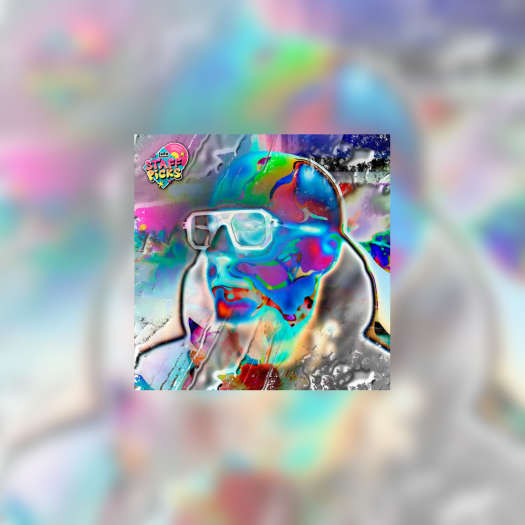Casting around for a convenient opening metaphor, I got it into my noggin to find out the price of tea in China. Turns out it's not so easy to do. I found plenty of Chinese tea shops online, but they listed export prices, when I want to know the price of tea actually in China, and since I don't read or speak Chinese, I couldn't tell whether the Chinese sites I was browsing were retailers or wholesalers or in the tea business whatsoever. In short, I did indeed come home with a metaphor, which is that music pricing can appear a mysterious business, if you don't speak the lingo.
Let's start with good old retail. How do CDs end up costing $14.99 at one store and $19.99 at another, and why is it that a 20-year-old release can sometimes cost twice as much as the hot new thing that came out last month?
Price points at retail are ultimately decided by a kind of ongoing jostle among distributors, retailers and consumers, the market impulse being to try to get as much as consumers will pay, and the consumer impulse being to try to pay less. But at the start of the chain, a label will negotiate a sales royalty per unit with its distributor, an amount typically expressed as X dollars against the "published price to dealer" or PPD, being the price at which the distributor will sell each CD to the retailer. Between the label rate and the PPD is usually a mark-up of about 25 percent or more, and that's where distributors make their money. Retailers then mark up the CD by 30 to 50 percent, and that's where they make their money. If you do the math in reverse, a full-length CD selling for $15.99 was purchased by the record store at a PPD of $11 or so, of which the distributor will pay the label perhaps $8. The label then pays the artist a royalty as negotiated in the artist's record deal. (It's often shockingly low ― like, 18 percent of PPD or a whopping $1.44 per the preceding example ― but that's a rant for another time.)
Most record stores are happy to stock new and popular CDs at standard pricing. That's the stuff that turns over fairly quickly. Plague, for retailers, is product that doesn't turn over. That's why rarer and older catalogue often costs consumers so much more: not because it's rare or old, but because it takes up shelf space in the store that could otherwise be occupied something that sells and can therefore contribute to the lights staying on. So a "specially priced" CD has to really earn its keep, in the form of a $24.99 price tag.
Shelf space and turnover are also the chief concerns that make retailers generally not too interested in buying EPs. An EP takes up the same amount of space as a CD, but since it has fewer tracks, the retailer has to sell it for less. Even jacking up the retail margin to 50 percent or more, EPs make less money for record stores. So artists, take note! EPs are fun to make, but don't expect them to fly off the shelves. Or even get to the shelves.
Digital music pricing is a curious thing and the subject of some pretty hot debate in the industry and among consumers. At the dawn of legal downloading, the music industry feared it would cannibalize the traditional retail business if it offered lower prices for music purchased online. So in its wisdom, the industry proclaimed that albums should sell for about what you'd pay for them in a store… even though digital albums incurred no manufacturing, packaging or shipping costs! Consumers, quite rightly, felt comparable pricing was unjustified and no doubt many of them took to the torrents in protest.
But we'd only just begun to get outraged when iTunes came along and sealed the deal for a buck a track. As the world's runaway favourite music library software/retailer, iTunes' dominance of the legal digital music business allowed it to set the pricing, and it arrived at 99 cents a song as a concession to major record labels, many of whom may not have otherwise gotten aboard the iTunes train. (Of course, they would have continued to look like ginormous idiots but again, another rant for another time.)
Since then, the majors have attempted to drive up online music pricing by foisting "premium" this and "limited" that on us, at $1.29-plus per track. Given that digital sales haven't quite caught up to ground lost in traditional retail, major labels are doubtless highly motivated to do what they can to keep jacking up margins for online music sales.
Finally, there's merchandise pricing. Artists trying to decide what they should sell their off-stage CDs for, should consider a number of things: what the CDs cost to make and transport, or how much they are buying them from the label for, plus the size of the venue and the nature of the audience, plus what others are selling their shit for. It's entirely appropriate to sell a CD for $25 in a festival or major theatre setting, but not so much for a dive bar with three other bands on the bill. In the latter scenario, etiquette requires the bands to sell their CDs at the same price, so that they don't undercut one another ― unless, of course, yours comes with an extra thingy or whatsit.
Given the bitter war still being fought between music lovers and copyright owners, there's an emerging body of thought that music should be free, or at least feel like free. If we could figure out a way for music creators to make a living even when their creations are being enjoyed without direct compensation, I'd say hurrah for that. But until that happy day, I caution artists not to give it all away for free. That's most definitely not the price of tea in China. I think.
Let's start with good old retail. How do CDs end up costing $14.99 at one store and $19.99 at another, and why is it that a 20-year-old release can sometimes cost twice as much as the hot new thing that came out last month?
Price points at retail are ultimately decided by a kind of ongoing jostle among distributors, retailers and consumers, the market impulse being to try to get as much as consumers will pay, and the consumer impulse being to try to pay less. But at the start of the chain, a label will negotiate a sales royalty per unit with its distributor, an amount typically expressed as X dollars against the "published price to dealer" or PPD, being the price at which the distributor will sell each CD to the retailer. Between the label rate and the PPD is usually a mark-up of about 25 percent or more, and that's where distributors make their money. Retailers then mark up the CD by 30 to 50 percent, and that's where they make their money. If you do the math in reverse, a full-length CD selling for $15.99 was purchased by the record store at a PPD of $11 or so, of which the distributor will pay the label perhaps $8. The label then pays the artist a royalty as negotiated in the artist's record deal. (It's often shockingly low ― like, 18 percent of PPD or a whopping $1.44 per the preceding example ― but that's a rant for another time.)
Most record stores are happy to stock new and popular CDs at standard pricing. That's the stuff that turns over fairly quickly. Plague, for retailers, is product that doesn't turn over. That's why rarer and older catalogue often costs consumers so much more: not because it's rare or old, but because it takes up shelf space in the store that could otherwise be occupied something that sells and can therefore contribute to the lights staying on. So a "specially priced" CD has to really earn its keep, in the form of a $24.99 price tag.
Shelf space and turnover are also the chief concerns that make retailers generally not too interested in buying EPs. An EP takes up the same amount of space as a CD, but since it has fewer tracks, the retailer has to sell it for less. Even jacking up the retail margin to 50 percent or more, EPs make less money for record stores. So artists, take note! EPs are fun to make, but don't expect them to fly off the shelves. Or even get to the shelves.
Digital music pricing is a curious thing and the subject of some pretty hot debate in the industry and among consumers. At the dawn of legal downloading, the music industry feared it would cannibalize the traditional retail business if it offered lower prices for music purchased online. So in its wisdom, the industry proclaimed that albums should sell for about what you'd pay for them in a store… even though digital albums incurred no manufacturing, packaging or shipping costs! Consumers, quite rightly, felt comparable pricing was unjustified and no doubt many of them took to the torrents in protest.
But we'd only just begun to get outraged when iTunes came along and sealed the deal for a buck a track. As the world's runaway favourite music library software/retailer, iTunes' dominance of the legal digital music business allowed it to set the pricing, and it arrived at 99 cents a song as a concession to major record labels, many of whom may not have otherwise gotten aboard the iTunes train. (Of course, they would have continued to look like ginormous idiots but again, another rant for another time.)
Since then, the majors have attempted to drive up online music pricing by foisting "premium" this and "limited" that on us, at $1.29-plus per track. Given that digital sales haven't quite caught up to ground lost in traditional retail, major labels are doubtless highly motivated to do what they can to keep jacking up margins for online music sales.
Finally, there's merchandise pricing. Artists trying to decide what they should sell their off-stage CDs for, should consider a number of things: what the CDs cost to make and transport, or how much they are buying them from the label for, plus the size of the venue and the nature of the audience, plus what others are selling their shit for. It's entirely appropriate to sell a CD for $25 in a festival or major theatre setting, but not so much for a dive bar with three other bands on the bill. In the latter scenario, etiquette requires the bands to sell their CDs at the same price, so that they don't undercut one another ― unless, of course, yours comes with an extra thingy or whatsit.
Given the bitter war still being fought between music lovers and copyright owners, there's an emerging body of thought that music should be free, or at least feel like free. If we could figure out a way for music creators to make a living even when their creations are being enjoyed without direct compensation, I'd say hurrah for that. But until that happy day, I caution artists not to give it all away for free. That's most definitely not the price of tea in China. I think.




